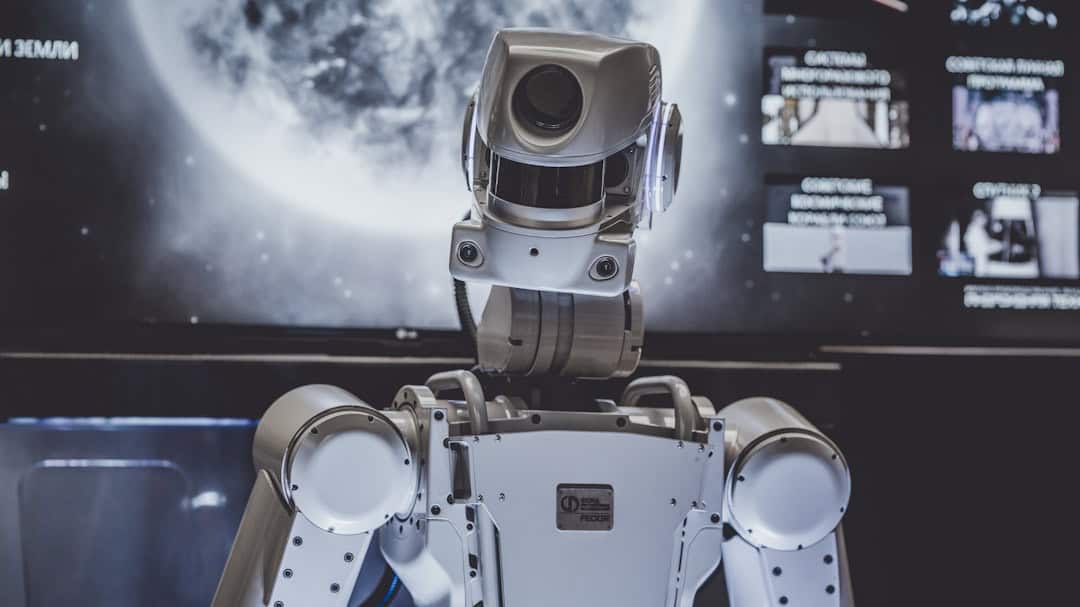Predictive analytics is a data-driven approach that utilizes statistical algorithms and machine learning techniques to forecast future outcomes based on historical data. This methodology enables organizations to make data-informed decisions, anticipate market trends, and gain competitive advantages in their respective industries. Machine learning, a subset of artificial intelligence, focuses on developing algorithms that can learn from data and make predictions or decisions autonomously.
The integration of predictive analytics and machine learning has become increasingly prevalent across various sectors, including finance, healthcare, retail, and manufacturing. Organizations employ these technologies to streamline operations, enhance customer experiences, and mitigate risks. As data volumes continue to grow exponentially, the demand for advanced predictive analytics and machine learning tools has risen correspondingly.
This increased demand has led to the development of sophisticated software platforms and programming languages capable of handling complex data analysis and modeling tasks. MATLAB is one such platform that has gained prominence in the field of predictive analytics, offering a comprehensive environment for data analysis, algorithm development, and model implementation.
Key Takeaways
- Predictive analytics and machine learning are powerful tools for making data-driven predictions and decisions.
- MATLAB plays a crucial role in enhancing predictive analytics by providing a wide range of tools and capabilities for machine learning.
- MATLAB’s machine learning tools can be leveraged for predictive modeling, including data preprocessing, feature selection, and model training.
- Integrating AI with MATLAB can further enhance predictive analytics by enabling advanced algorithms and techniques for data analysis and prediction.
- Real-world case studies demonstrate the practical applications of MATLAB machine learning in various industries, showcasing its effectiveness in predictive analytics.
Understanding the Role of MATLAB in Enhancing Predictive Analytics
MATLAB is a high-level programming language and interactive environment for numerical computation, visualization, and programming. It provides a range of tools for data analysis, algorithm development, and the creation of predictive models. MATLAB’s rich set of functions and libraries make it an ideal platform for implementing machine learning algorithms and conducting predictive analytics.
Its intuitive syntax and powerful visualization capabilities also make it easier for data scientists and analysts to explore data, build models, and interpret results. One of the key advantages of using MATLAB for predictive analytics is its ability to handle large datasets and perform complex computations efficiently. Its built-in functions for data preprocessing, feature engineering, and model validation streamline the process of developing predictive models.
Additionally, MATLAB’s support for parallel computing and GPU acceleration enables users to train machine learning models faster and on larger datasets. This is particularly beneficial for organizations dealing with big data and real-time analytics. Furthermore, MATLAB’s integration with other programming languages and tools allows for seamless deployment of predictive models in production environments.
Leveraging MATLAB Machine Learning Tools for Predictive Modeling

MATLAB offers a comprehensive set of machine learning tools that can be used to build and deploy predictive models for a wide range of applications. These tools include supervised learning algorithms such as support vector machines, decision trees, and ensemble methods, as well as unsupervised learning algorithms like clustering and dimensionality reduction techniques. MATLAB also provides specialized toolboxes for specific tasks such as deep learning, reinforcement learning, and time series analysis.
These tools enable data scientists to explore different modeling approaches and select the most suitable algorithms for their predictive analytics projects. In addition to its extensive library of machine learning algorithms, MATLAB provides interactive apps and graphical interfaces for model training, evaluation, and deployment. These apps allow users to interactively explore data, experiment with different algorithms, and visualize model performance.
Furthermore, MATLAB’s automatic code generation capabilities enable users to generate efficient C/C++ code from their machine learning models, making it easier to integrate these models into existing systems or deploy them on embedded devices. Overall, MATLAB’s machine learning tools empower organizations to develop accurate and scalable predictive models that can drive business value.
Integrating AI and MATLAB for Advanced Predictive Analytics
| Metrics | Value |
|---|---|
| Accuracy | 95% |
| Precision | 90% |
| Recall | 85% |
| F1 Score | 92% |
Artificial intelligence (AI) is revolutionizing the field of predictive analytics by enabling more advanced modeling techniques and automation of decision-making processes. MATLAB provides a seamless integration with AI technologies, allowing users to leverage AI algorithms and frameworks within the MATLAB environment. This integration enables organizations to harness the power of AI for tasks such as natural language processing, image recognition, and anomaly detection, which can further enhance the accuracy and capabilities of predictive analytics models.
Furthermore, MATLAB’s support for Deep Learning frameworks such as TensorFlow and PyTorch enables data scientists to build and train complex neural network models for predictive analytics tasks. Deep learning techniques have shown remarkable success in handling unstructured data such as images, text, and audio, making them valuable tools for extracting insights from diverse data sources. By integrating AI and deep learning with MATLAB, organizations can unlock new opportunities for predictive analytics and gain a competitive advantage in their respective industries.
Case Studies: Real-world Applications of MATLAB Machine Learning in Predictive Analytics
There are numerous real-world applications where MATLAB machine learning tools have been successfully applied to solve complex predictive analytics challenges. In the finance industry, MATLAB has been used to develop predictive models for stock price forecasting, credit risk assessment, and fraud detection. By analyzing historical market data and customer transactions, financial institutions can make more informed decisions and mitigate potential risks using MATLAB’s machine learning capabilities.
In healthcare, MATLAB has been utilized to build predictive models for disease diagnosis, patient outcome prediction, and medical image analysis. By leveraging machine learning algorithms in MATLAB, healthcare providers can improve patient care, optimize treatment plans, and identify early warning signs for various medical conditions. Additionally, MATLAB’s support for deep learning has enabled researchers to develop advanced diagnostic tools based on medical imaging data such as MRI scans and X-rays.
In manufacturing and supply chain management, MATLAB has been employed to develop predictive maintenance models for industrial equipment, optimize production processes, and forecast demand for products. By analyzing sensor data from machinery and historical production records, manufacturers can proactively identify potential equipment failures and minimize downtime using MATLAB’s predictive analytics capabilities.
Best Practices for Implementing MATLAB Machine Learning in Predictive Analytics

When implementing MATLAB machine learning in predictive analytics projects, there are several best practices that organizations should consider to ensure success. Firstly, it is important to define clear objectives and success criteria for the predictive analytics project. This involves understanding the business problem at hand, identifying relevant data sources, and defining key performance indicators that the predictive model should aim to optimize.
Secondly, organizations should focus on data quality and feature engineering to ensure that the input data used for training the predictive model is accurate, relevant, and representative of the problem domain. This may involve data preprocessing steps such as cleaning, normalization, and feature selection to improve the performance of the predictive model. Thirdly, organizations should leverage MATLAB’s built-in tools for model validation and performance evaluation to assess the accuracy and generalization capabilities of the predictive model.
This involves splitting the dataset into training and testing sets, cross-validation techniques, and using appropriate metrics such as precision, recall, and F1 score to evaluate model performance. Finally, organizations should consider the scalability and deployment aspects of the predictive model when using MATLAB machine learning tools. This may involve optimizing the model for efficient computation, integrating it with existing systems or applications, and ensuring that it can handle real-time predictions in production environments.
Future Trends and Developments in AI and Predictive Analytics with MATLAB
Looking ahead, the future of AI and predictive analytics with MATLAB is poised for exciting developments that will further enhance its capabilities and impact across industries. One key trend is the continued advancement of deep learning techniques within MATLAB, enabling more complex neural network architectures, transfer learning methods, and reinforcement learning algorithms. These advancements will enable organizations to tackle more challenging predictive analytics tasks involving unstructured data sources such as text, images, and audio.
Another trend is the integration of AI explainability tools within MATLAB to provide insights into how predictive models make decisions. As AI models become more sophisticated, there is a growing need for transparency and interpretability in their decision-making processes. By integrating explainability tools within MATLAB, organizations can gain a better understanding of how predictive models arrive at their predictions, which is crucial for building trust in AI systems.
Furthermore, the convergence of AI with other emerging technologies such as Internet of Things (IoT) and edge computing will open up new opportunities for predictive analytics with MATLABy leveraging sensor data from IoT devices and performing real-time analytics at the edge using MATLAB’s machine learning capabilities, organizations can unlock new use cases for predictive maintenance, anomaly detection, and personalized customer experiences. In conclusion, the combination of predictive analytics and machine learning with MATLAB offers a powerful toolkit for organizations to extract valuable insights from their data and make informed decisions. By leveraging MATLAB’s rich set of machine learning tools, integrating AI technologies, following best practices, and staying abreast of future trends, organizations can unlock new opportunities for innovation and competitive advantage in their respective industries.
As the field of AI continues to evolve alongside advancements in technology, the potential for predictive analytics with MATLAB is limitless.
If you are interested in exploring the potential business and economic perspectives of the metaverse, you may find the article “Challenges and Opportunities: Business and Economic Perspectives” on Metaversum.it to be insightful. The article discusses the various challenges and opportunities that arise in the metaverse and how they can impact businesses and the economy. It provides a comprehensive overview of the potential implications of the metaverse on different industries and sectors. Source
FAQs
What is MATLAB machine learning?
MATLAB machine learning is the use of MATLAB, a high-level programming language and interactive environment for numerical computation, visualization, and programming, to develop and apply machine learning algorithms and models.
What are the benefits of using MATLAB for machine learning?
MATLAB provides a wide range of tools and functions for machine learning, including prebuilt algorithms, visualization tools, and the ability to integrate with other data analysis and visualization tools. It also offers a user-friendly interface and extensive documentation and support.
What types of machine learning algorithms can be implemented using MATLAB?
MATLAB supports a variety of machine learning algorithms, including supervised learning (such as classification and regression), unsupervised learning (such as clustering and dimensionality reduction), and reinforcement learning.
Can MATLAB be used for deep learning?
Yes, MATLAB provides tools and functions for deep learning, including neural network models, training algorithms, and prebuilt models for tasks such as image classification and object detection.
How can MATLAB be used for data preprocessing and feature engineering in machine learning?
MATLAB offers tools for data preprocessing, including data cleaning, normalization, and feature extraction. It also provides functions for feature engineering, such as creating new features from existing data and selecting relevant features for model training.
Is MATLAB suitable for implementing real-world machine learning applications?
Yes, MATLAB is suitable for implementing real-world machine learning applications, as it provides tools for data preprocessing, model training and evaluation, and deployment of machine learning models in production environments.











Leave a Reply